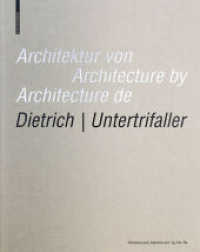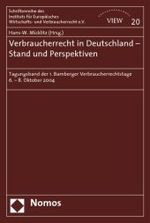- ホーム
- > 洋書
- > ドイツ書
- > Humanities, Arts & Music
- > History
- > antiquity
Full Description
This volume is a comprehensive, critical introduction to vertebrate zooarchaeology, the field that explores the history of human relations with animals from the Pliocene to the Industrial Revolution. The book is organized into five sections, each with an introduction, that leads the reader systematically through this swiftly expanding field. Section One presents a general introduction to zooarchaeology, key definitions, and an historical survey of the emergence of zooarchaeology in the Americas, Europe, Asia, and Africa, and introduces the conceptual approach taken in the book. This volume is designed to allow readers to integrate data from the book along with that acquired elsewhere within a coherent analytical framework. Most of its chapters take the form of critical "review articles," providing a portal into both the classic and current literature and contextualizing these with original commentary. Summaries of findings are enhanced by profuse illustrations by the author and others.
Contents
Section 1: An Orientation to Zooarchaeology.- Chapter 1. Introduction.- Chapter 2. The Emergence of Zooarchaeology.- Chapter 3. A Perspective on Zooarchaeology.- Section 2: The Evidence- Vertebrate Bodies.- Chapter 4. Bone and Vertebrate Bodies as Uniformitarian Materials.- Chapter 5. Bone's Intrinsic Traits: Why Animals Eat Animals.- Chapter 6. Bone's Intrinsic Traits: Inferring Species, Sex, and Age.- Chapter 7. Bone's Intrinsic Traits: Age Estimation from Mammalian Dentition.- Section 3: Basic Practical Approaches.- Chapter 8. Field Recovery, Lab Methods, Data Records, Curation.- Chapter 9. Identification: Sorting Decisions and Analytic Consequences.- Chapter 10. Zooarchaeology's Basic Counting Units.- Section 4: Identifying Causal Process, Effector, Actor.- Chapter 11. Human, Animal, and Geological Causes of Bone Breakage.- Chapter 12. Mammalian and Reptilian Carnivore Effects on Bone.- Chapter 13. Avian Carnivore, Ungulate, and Effects on Bone.- Chapter 14. Primary Human Effects: Cutting Edge and Percussion Effects on Bone.- Chapter 15. Culinary Processing and Preservational Effects on Bone.- Chapter 16. Invertebrate, Plant, and Geological Effects on Bone.- Section 5: Studying Behavioral, Social, Ecological Contexts.- Chapter 17. Analyzing Multi-Agent Assemblages.- Chapter 18. Reasoning with Zooarchaeological Counting Units and Statistics.- Chapter 19. Skeletal Disarticulation, Dispersal, Dismemberment, Selective Transport.- Chapter 20. Calibrating Nutritionally Driven Selective Transport.- Chapter 21. Calibrating Bone Durability.- Chapter 22. Zooarchaeology and Ecology: Mortality Profiles, Species Abundance, Diversity.- Chapter 23. New Ecological Directions: Isotopes, Genetics, Historical Ecology, Conservation.- Chapter 24. Behavioral Ecology and Zooarchaeology.- Chapter 25. Social Relations through Zooarchaeology.- Conclusion.- Chapter 26. Doing Zooarchaeology Today and Tomorrow.








